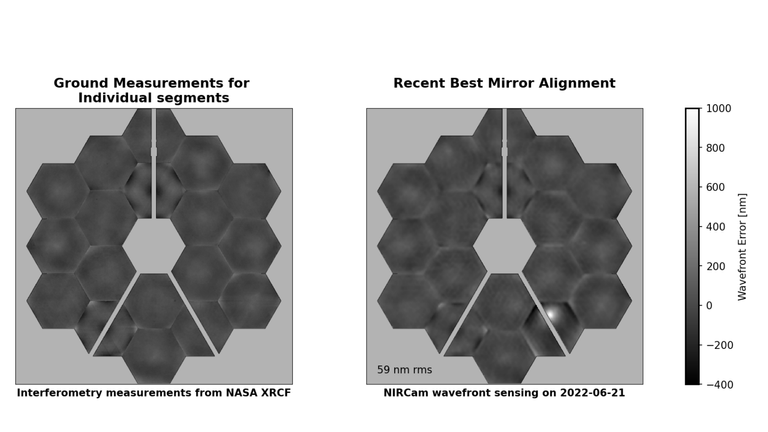NASA has reported that a meteoroid hit on the James Webb Space Telescope has caused "significant uncorrectable" damage to one of the panels it uses to stare into deep space.
The orbiting observatory was launched last December and recently released a full set of new observations, including what is said to be the "deepest" and most detailed picture of the cosmos to date.
Like any spacecraft, it has encountered micrometeoroids and its sensors have detected six deformations on the telescope's primary mirror panels that have been attributed to strikes.
"Each micrometeoroid caused degradation in the wavefront of the impacted mirror segment, as measured during regular wavefront sensing," said NASA.
Some of these degradations are correctable by adjusting the maths that NASA applies to the data that each panel collects, according to a commissioning paper published last week.
However one strike - which occurred between 22 and 24 May - was caused by a larger micrometeoroid and resulted in "significant uncorrectable change" to segment C3 according to the document.
Fortunately, this change is not especially impactful on how the telescope as a whole functions - and NASA has said that its performance is continuing to exceed expectations - but it fundamentally reduces the accuracy of the data collected.
However, the strike has caused some concern about the impact that future strikes of these larger micrometeoroids might have.
"It is not yet clear whether the May 2022 hit to segment C3 was a rare event," the document said.
There could be a chance that it was "an unlucky early strike by a high kinetic energy micrometeoroid that statistically might occur only once in several years" the NASA team considered.
But potentially "the telescope may be more susceptible to damage by micrometeoroids than pre-launch modelling predicted".
"The project team is conducting additional investigations into the micrometeoroid population [and] how impacts affect beryllium mirrors," it added.
Another potential method to mitigate the strikes could involve minimising the amount of time that the JWST spent "looking in the direction of orbital motion, which statistically has higher micrometeoroid rates and energies".
A growing amount of orbital debris has regularly forced the International Space Station's controllers to carry out "avoidance manoeuvres" to prevent it from being hit.
Read more:
A dying star and a 'cosmic dance': Ancient galaxies revealed in never-seen-before telescope pictures
Two pictures of Jupiter leaked by James Webb Telescope team
NASA currently tracks more than 27,000 pieces of space junk, although it says there is much more debris - which is too small to be tracked, but still large enough to threaten human spaceflight as well as robotic missions.
NASA said: "There are half a million pieces of debris the size of a marble or larger (up to 0.4 inches, or 1cm), and approximately 100 million pieces of debris about .04 inches (or 1mm) and larger."
"There is even more, smaller micrometer-sized (0.000039 of an inch in diameter) debris," it added, and all of them can pose a risk.
"Even tiny paint flecks can damage a spacecraft" when travelling at velocities of up to 17,500mph, said NASA - fast enough to go from London to New York in 12 minutes.
Article From & Read More ( Meteoroid hit has caused 'significant uncorrectable' damage to James Webb Space Telescope - Sky News )https://ift.tt/CXBIjSk
Science


No comments:
Post a Comment